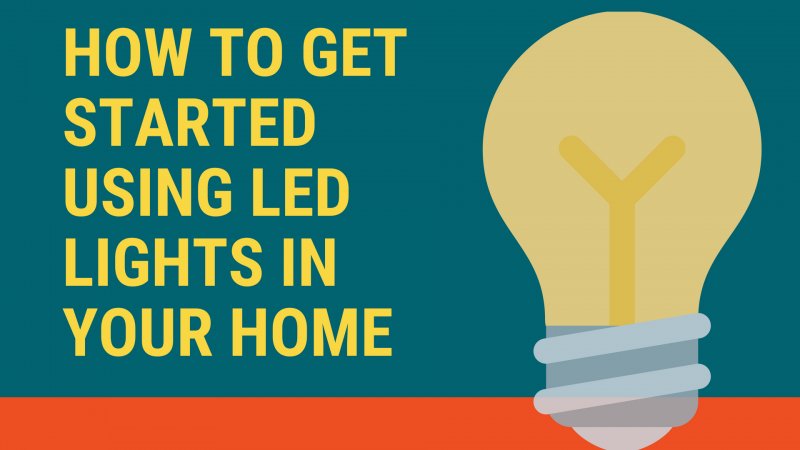How to Get Started using LED Lights in Your Home

Without a doubt, LED lights have surpassed the traditional incandescent and compact fluorescent light bulbs. Also known as Light Emitting Diodes, they're a fascinating technological advancement made the lighting industry today. But there are times wherein you'll still find yourself retreating to using the lights you're used to.
Since LEDs have unfamiliar specifications, shapes, and statistics, it's tempting to stick to the traditional bulbs in the market. However, there will always be that nagging feeling that you're wasting more energy, and changing more light bulbs than you should.
So, if you're curious if changing to LED is worth it, we'll cover the basics for you.
Every Room is Different
It's common knowledge that the sun gives us energy. Light bulbs work the same way, too. Their bulbs emit blue lights that produce serotonin, helping you stay alert, awake, and focused. On the other hand, lamps that do not emit blue light waves produces melatonin in the brain. As a result, it makes you feel drowsy, relaxed, and ready for a good night's sleep.
Soft, warm light, a standard color in incandescent bulbs, have a lower temperature. Medium temperature bulbs produce neutral whites and are ideal for work and office spaces. Meanwhile, higher temperature bulbs mimic daylight and produce cool-whites, making it an excellent choice for reading high contrast.
LED Lights Have Long Lifespans
LEDs are known for its longer lifespan, unlike conventional lighting solutions. In fact, it averages to last for about 50,000 to 100,000 working hours or more. Alternatively, an average incandescent bulb lasts only for about 1,000 hours, while a compact fluorescent lasts for about 8,000 to 10,000 hours.
Due to its long operational life, LEDs can dramatically reduce overall labor costs by achieving a lower maintenance lighting system.
They Are Energy Efficient
LEDs also consume very minimal amounts of power, using at least 50 percent less electricity than its more traditional counterparts. Thus, it gives you more substantial energy cost savings especially in spaces wherein the lights are on for more extended periods.
Moreover, LEDs also aim light in a specific direction, unlike conventional lights such as fluorescent that emit both heat and light in all directions. Having a capability of directional lighting reduces both wasted energy and light.
No UV and IR Emissions
Only less than ten percent of the total power of incandescent lights is converted into visible light. The majority of the energy is transformed into radiated and infrared heat. Thus, excessive ultraviolet radiation and temperature can be a burn hazard.
LEDs, on the other hand, virtually emits no UV or IR. With the recent advancement of LED lighting technologies, this resulted in lower costs and increased reliability. Although some many are tempted to assume that LEDs are the right choice because of its extremely energy efficient, the selection should still be based on a variety of factors such as expected lifetime, light quality, and distribution.
Can Withstand Tough Conditions
LEDs are built in strong components and are durable. In fact, they can withstand highly rugged and rough conditions. Moreover, they're highly resistant to impacts, vibrations, and shocks. Thus, they make excellent outdoor lighting systems.
Furthermore, they're ideal for rough environmental conditions such as exposure to rain, wind, traffic-related public exposure, manufacturing and constructions sites.
They're Eco-friendly
Most traditional fluorescent lighting bulbs are dangerous to the environment because it contains because it contains toxic materials such as mercury. LED lights are free from these hazardous materials. They're also 100% recyclable, which dramatically decreases your carbon footprint by up to a third. It's longer lifespan means that a single LED light bulb can save the production of over 25 incandescent light bulbs. It's a huge leap if you want to aim for a greener, more eco-friendly future!
Lighting Design and Consultation
Whether you're starting a new project or looking forward to remodeling an existing space, one of the crucial aspects in contributing to its overall success is to consult a lighting specialist. If your goal is to conserve energy, set moods, implement a control system and to ensure the functionality of your space, then enlisting a professional lighting consultant is a wise investment.
More to Read:
Previous Posts:


